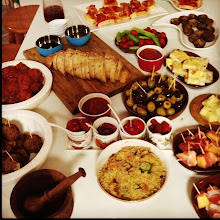Coriander
Cilantro and coriander come of one and the same plant, a pretty annual herb with feathery leaves and large white umbrella flower heads. The name cilantro refers to the fresh leaf, also known as Chinese parsley. Coriander is the name for the seeds. Not only is it a wonderful herb to cook with as the roots, stem and leaves can all be used in different ways, but it is fantastic for your body!
Cilantro/Coriander has 11 components of essential oils, 6 types of Acids,
Minerals and Vitamins (inc vitamin C) also contains Cineole which posses
anti-rheumatic and anti-arthritic properties effective in reducing swelling and
water retention. Some of the acids contained in coriander help to reduce cholesterol, and the oils Borneol and Linalool aid digestion and proper liver function, whilst the anti
bacterial oil Citronelol acts as an antiseptic and anti-microbial in the healing
of mouth ulcers.
Coriander also contains Iron in a direct source for anaemic’s
and for digestion aids in the proper secretion of enzymes and digestive juices
in the stomach.
Coriander also aids in the proper secretion of hormones to
reduce PMS and Period pain, the anti-oxidants in coriander also help prevent
aging of the eye and soothes against eye stress.
- How to grow coriander
Coriander needs a frost free period
to grow but it doesn't like extreme heat. So in milder climates you
grow coriander during summer, in tropical climates you grow it during
the cooler dry season.
To grow coriander you need
reasonable soil and you need to keep the plants well watered.
Growing cilantro/coriander from seed
You can plant coriander in rows
for easy harvesting or you can spread the seed over a wider area and
rake it in. It depends how much seed you have available.
You want about 5 cm between
plants if you grow coriander for the leaf. They need more space
if you grow them for seed, but you can always eat the extre plants
and just leave a few to go to seed.
coriander seeds take about two
to three weeks to germinate. If they come up too thickly, just
pull up and eat the extras...
Harvesting cilantro/coriander
After you have eaten all your
thinnings, harvest individual coriander leaves of the base of the
remaining plants. Just make sure the plant is big enough to cope and
leave some leaves on it so it can continue to grow.
Sooner or later your coriander
plants will flower. Once they start developing that flower stalk they
stop making more leaves. Therefore it is a good idea to re-sow
coriander every few weeks during the growing season. That way you
never run out.
Some people also chop out the
flower stalk as soon as it shows and manage to keep the plants going
a bit longer. Or they harvest the whole coriander plant once it shows
signs of wanting to flower.
Apart from that coriander has no
special soil requirements. Rich, dark soil always produces the
biggest, healthiest plants, but any reasonable soil with average
nutrient levels should be fine. If you want to feed your plants
extra, some diluted liquid fertilizer like fish emulsion never goes
astray.
 Corn Fritters
Corn Fritters









































